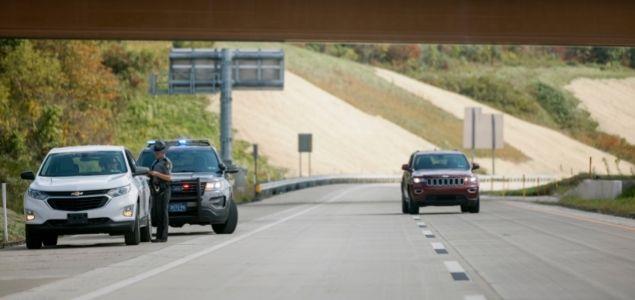
PennDOT recently partnered with the Pennsylvania Turnpike Commission (PTC) and the Pennsylvania State Police (PSP) to remind motorists to move over or slow down ahead of “National Move Over Awareness" Day, which was observed on Saturday, October 15.
Pennsylvania's Move Over Law requires drivers approaching an emergency response area who are unable to safely merge into a lane farther away from the response area to "pass the emergency response area at a speed of no more than 20 miles per hour less than the posted speed limit and reasonable for safely passing." An emergency response area is where an emergency vehicle has its lights flashing, or where road crews or emergency responders have lighted flares, posted signs, or try to warn travelers.
Drivers must move over or slow down for all responders, including police, fire, and ambulance crews, as well as stopped tow trucks and maintenance vehicles. The Move Over Law also mandates drivers change lanes or slow down when approaching disabled vehicles when at least two emergency displays, such as vehicle hazard lamps, road flares, and/or cones or caution signs are present.
Failure to move over or slow down will result in a citation that carries a fine of $500 for first-time offenders, $1,000 for a second offense, and $2,000 and a 90-day license suspension for a third or subsequent offense. Penalties are increased for incidents that seriously injure or kill another person.
On average in the United States, two emergency responders are struck daily while working along the roadway. These incidents cause property damage, injuries, and in some cases fatalities.
In Pennsylvania, 152 emergency responders have been struck and killed while assisting on Pennsylvania roadways.
Video and photos from the virtual event can be found online at PAcast.com. Additional high-resolution photos are available on Flickr.
For more information on the Move Over Law, visit www.PennDOT.gov/Safety.
ABOUT THIS BLOG
Did you know PennDOT is directly responsible for nearly 40,000 miles of highway and roughly 25,000 bridges? We oversee programs and policies affecting highways, urban and rural public transportation, airports, railroads, ports and waterways, in addition to administering the state's more than 11 million vehicle registrations and 8.8 million driver's licenses.
So, how do we do what we do? And how can we help you travel in Pennsylvania — whether it be for business or leisure — in safe and enjoyable manner? Read PennDOT Way to learn more about the department, what we do, and how and why we do it.
TAGS
50-Year Anniversary, 511PA, Aggressive Driving, Airports, Autonomous Vehicles, Bicycles, Bridges, Child Safety, Community Relations, Construction, COVID-19, Distracted Driving, District 1, District 10, District 11, District 12, District 2, District 3, District 4, District 5, District 6, District 8, District 9, DOTcom, Driver and Vehicle Services, Emergency Responders, Employment, Equity, FAQ Friday, Human Trafficking, Impaired Driving, Innovations, Live Free Ride Alive, Maintenance Monday, Motorcycles, Older Drivers, PA Motorcycle Safety Program, Pedestrians, PennDOT Connects, Ports, Public Transit, Railroads, REAL ID, Road MaP, Roadside Beautification, Rural Roads, Safety, School Buses, Seat Belts, State Transportation Innovation Council (STIC), Sustainability, Teen Drivers, Throwback Thursday, Transportation Funding, Travel in PA, Welcome Centers, Winter, Work Smart, Work Zone, Yellow Dot
LATEST POSTS
PennDOT Continues Sharing, Updating Resources for Local Governments to Pursue Bipartisan Infrastructure Law Funding Opportunities
Norwin High School Wins 2024 ‘Innovations Challenge’
Demo Complete: I-95 CAP Project in Center City Philadelphia
PennDOT Archeologist Connects Past, Present, and Future
Lehigh Valley DUI, Highway Safety Task Force Hosts Law Enforcement Seminar
ARCHIVES
2024
2023
2022
2021
2020
2019
2018
2017

